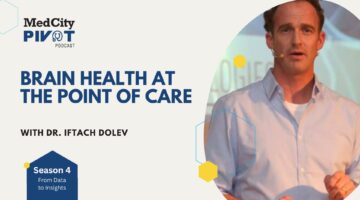
AI is revolutionising healthcare — enhancing diagnostics, streamlining workflows and supporting medical professionals in unprecedented ways. But with great potential comes significant risk. At the heart of any AI-powered solution lies its foundation: data. And if that data isn’t properly managed, protected and understood, the results can be unreliable at best — and dangerous at worst.
The old saying “bad data in, bad data out” has never been more relevant than in the era of AI, especially generative AI. This challenge becomes even more complex in healthcare, where AI must navigate highly sensitive, regulated and proprietary data. The big question is:
How can healthcare providers securely leverage AI while maintaining trust, privacy and compliance?

NEMT Partner Guide: Why Payers and Providers Should Choose MediDrive’s TMS
Alan Murray on improving access for medical transportation.
Retrieval augmented generation – the first step
The answer most AI professionals will give is Retrieval Augmented Generation (RAG), meaning use your data to help inform and enhance the user query with the correct data so the generative AI can use this data in its response. Some AI and RAG providers will even allow users to add security and governance controls to the data before and after the AI to help keep any Personally Identifiable Information (PII) or other protected data secure and only used or exposed to end users with the right level of access.
This is great, but I look at this as a brute force approach to RAG — one that is somewhat effective but often falls short in testing and trials because a critical element is missing from this approach. This missing component is the context and contextualization of the data you are sending to the AI.
Without a semantically connected view of your data via a knowledge graph, you will struggle to give the AI the most complete view of your data and the domain in which it exists. Additionally, the regulations and business rules that apply to the data can’t be added and actioned programmatically, potentially risking noncompliance.
A semantic approach: contextualize your data
So, what does a semantic approach to your data mean?
Well, it means adding a semantic layer(s) to your data to provide this context. In knowledge management, semantic layers are like a smart bridge between raw data and human understanding. They help organise, interpret and present information in a way that makes sense to people and the AI.
Imagine a large hospital network that stores patient data across multiple systems — electronic health records (EHRs), lab reports, imaging systems and billing databases. These systems often use different formats, terminologies and structures, making it difficult for doctors, researchers and administrators to access and analyse data effectively.
A semantic layer in this context would:
- Standardise terminology across systems (e.g., translating different medical codes for “heart attack” into a single, universally understood term)
- Enable natural language queries (e.g., a doctor can ask questions, and the system retrieves the right data, no technical query required)
- Enforce compliance and security with only authorised users accessing protected information
- Improve AI-driven predictions and insights by providing structured, meaningful and connected data, rather than fragmented raw information
For example, a doctor could ask, “Show me all diabetic patients who had abnormal kidney function tests in the last year,” and the semantic layer would retrieve the relevant data from multiple sources, even if different systems used different names or formats.
The key to trustworthy AI solutions in healthcare
By integrating a semantic layer, AI doesn’t just pull data — it understands it. This results in:
- More accurate AI-driven insights that align with medical and regulatory requirements
- Stronger security and compliance because AI now operates with human-level context
- Scalability across large healthcare providers so AI solutions stay more trustworthy and adaptable
In short, AI in healthcare can only reach its full potential when it’s built on a foundation of structured, meaningful and well-governed data. A semantic approach is the key to making AI not just powerful but also safer, reliable and transformative.
AI has the power to revolutionize healthcare, but without the right data strategy, it is more of a risk than an asset. The difference between AI that simply retrieves information and AI that understands and applies knowledge safely is context, which starts with a semantic approach. If healthcare providers want AI that is more accurate, secure and truly life-changing, they must build on a foundation of structured, meaningful and well-governed data.
This isn’t just a nice-to-have — it’s a critical part of fostering the scalability and security of the AI solutions we trust with our most sensitive data.
Photo: chanut iamnoy, Getty Images
Philip Miller is an AI strategist for Progress and was named a Top Influencer in Onalytica's Who's Who in Data Management. Outside of work, he's a father to two daughters, a fan of dogs and an avid learner, trying to learn something new every day.
This post appears through the MedCity Influencers program. Anyone can publish their perspective on business and innovation in healthcare on MedCity News through MedCity Influencers. Click here to find out how.









